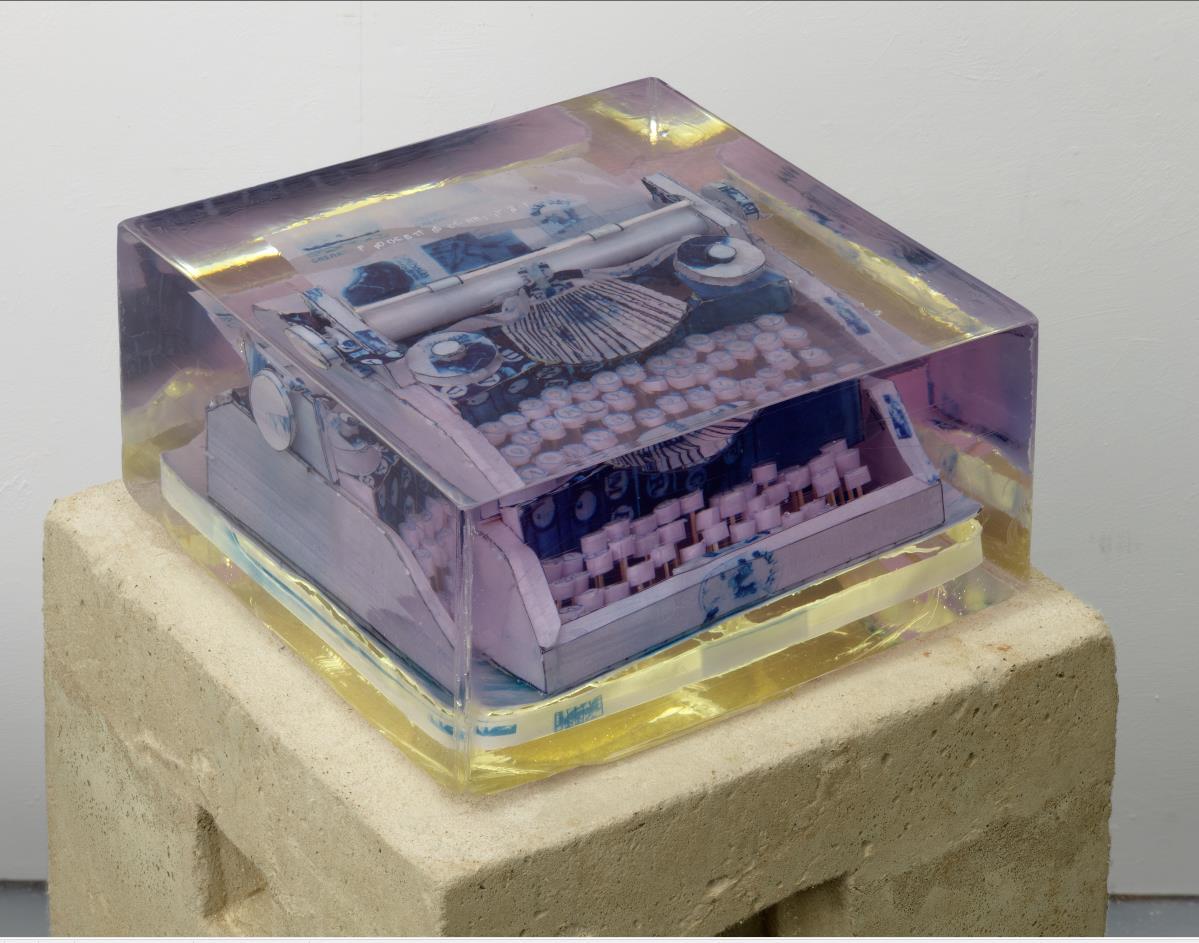
Meet The Maker: Kirsten Baskett
Meet the MakerHere at the Kit Kemp Design Studio, we have been mesmerised by Kirsten Baskett’s work. We have recently bought two of her pieces. The first has been installed at Ham Yard Hotel and the second has been placed in the Drawing Room at The Soho Hotel. For this week’s Meet the Maker, we catch up with the wonderful Kirsten Baskett...
Here at the Kit Kemp Design Studio, we have been mesmerised by Kirsten Baskett’s work.
We have recently bought two of her pieces. The first has been installed at Ham Yard Hotel and the second has been placed in the Drawing Room at The Soho Hotel.
Kirsten works from her studio in South East London. Her work is concentrated on time and memory, traces and absence. She uses obsolete technology as her impetus; typewriters, cameras, audio and visual equipment which has had a close human association and developed a patina or emotional charge through prolonged use.
2. We are so intrigued by your resin sculptures – what is the process?
I use recycled paper to create the pieces. Most papers have some personal meaning or nostalgia: such as music flyers or old record sleeves with the Woolworths price stickers still attached!
I create a scene using the various paper constructions. The resin allows me to float objects rather like a movie still and preserve the fragile paper so that the distilled result becomes frozen in time and permanently available to view, rather like a museum exhibit. All that remains is the latent emotional energy, which the original object had absorbed.
For this week’s Meet the Maker, we catch up with the wonderful Kirsten Baskett…
1. Please tell us a little bit about yourself and how you got into sculpture?
I grew up in Norfolk in a large family. My father modelled wax and cast his pieces in gold and silver to make vessels, jewellery and trophies. His workshop was in the house, so I was around ‘making’ my entire childhood. He was multi-skilled in many areas so I learnt everything from print-making to carving. Although I went to Art School up to MA level, most of my craft-making skills and processes were taught by him or by being around him.
3. Please tell us about the materials you use and why you use them? Why vintage machinery like typewriters and sewing machines?
I tend to use obsolete technology as these were the items that were my playthings in the late 1970s. Unlike the technology of today, they were made with love and care yet hold little monetary value. They can be fixed when they break unlike modern technology. I want to preserve their memory before these items are put into landfill to elevate their status, rather like artefacts that are put on a pedestal in a museum.
5. Do you have a favourite piece? Please can you show us and tell us why?
The sewing machine is my favourite piece as it is really a portrait of my mother, made from her sewing patterns. If you look closely, the machine is stitching a childhood image of my father and it speaks of their close bond.
I made it after seeing Grayson Perry’s cast of a woman with a sewing machine on her back and I was really intrigued by his story behind this piece.
4. Where do you get your inspiration from?
I am a keen scuba diver. When underwater the light refracts and objects change in scale and perspective. I have tried to emulate this emotion of being underwater, using the layered resin to change perception as one moves around in four dimensions underwater. Often while diving, you might come upon a discarded man-made object and it always fascinated me to see this object in a different world.
6. Do you have anything exciting you can show us which you are currently working on?
I always submit to the Royal Academy of Art’s Summer Exhibition. It is always tough getting through 3 rounds of judging and I’m currently waiting for the last round decision!
This year, Yinka Shonibare’s theme is ‘Recapturing Magic’. I created a print which symbolises us all overcoming the pandemic through everyone’s hard work. The soft ball symbolises our planet – its fragility and its resilience. I have used ‘Jackstraws’ which were a favourite childhood game of ours during the 1970s and 80s. There are various types of tools and symbols in this game, for example a hospital crutch which relates to our NHS etc. I have used these in my etching as drawings and I have also blind embossed the real objects.
I am also working on a chessboard… I will be hand-painting some of the paper chess pieces and creating a resin piece using this idea.
We wish Kirsten Baskett the best of luck getting into the RA’s Summer Exhibition. In the meantime, head over to Ham Yard Hotel and The Soho Hotel to have a closer look at her resin sculptures – they really are remarkable.










